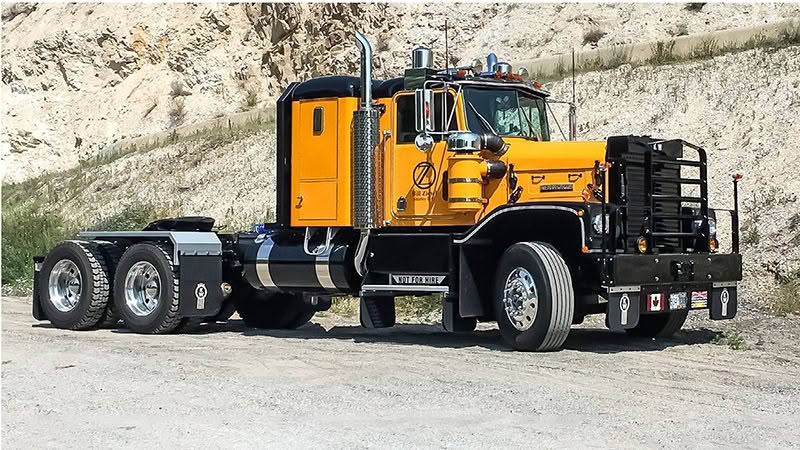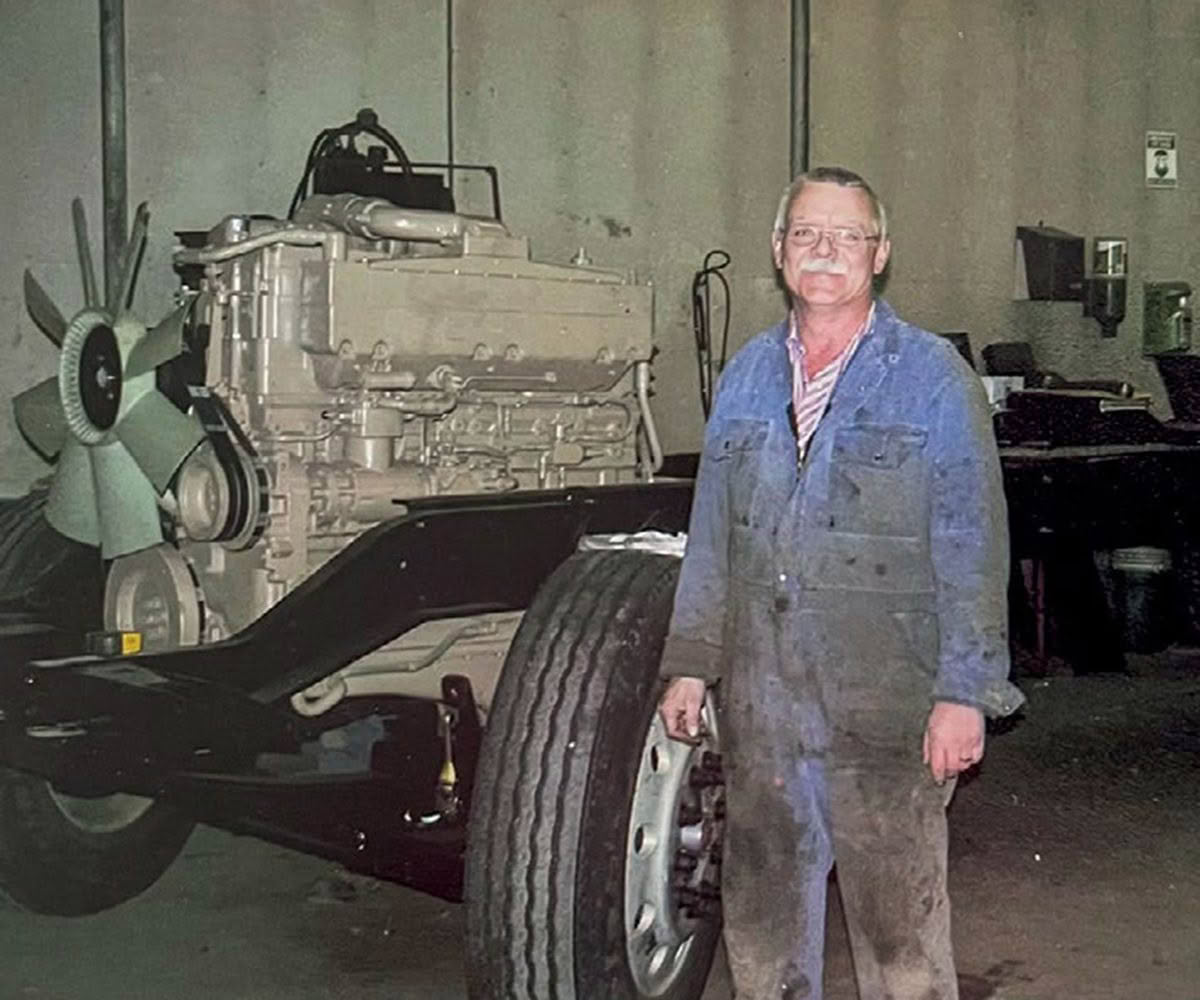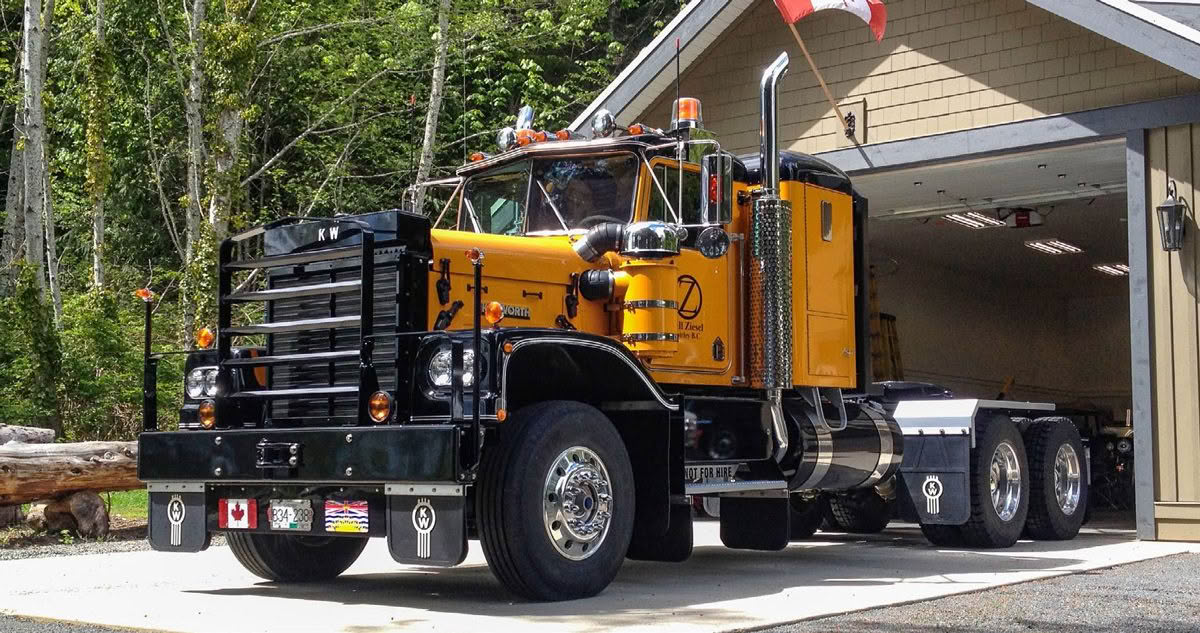
Built exclusively in Canada, the LW model Kenworth had a distinctive and rugged look. Designed to conquer the worst Canadian winters could dish out, it earned itself a strong following with both owners and drivers. While visiting the Brooks, Oregon, truck show, we caught up with Kenworth enthusiast Bill Ziesel and had a look over his immaculately restored LW.
Born and raised on a farm in Central Alberta, Bill Ziesel’s formative years couldn’t have been more removed from his future life as a professional transport operator.
“It was the early 1970s, and I guess I was just a black sheep or something, I really didn’t want to farm like my brothers, so instead I went truckin’. I started driving a gravel truck for a friend of mine. After a while I thought, ‘If I’m going to do this, I might as well do it for myself’. I had heard from a couple of guys that had moved to Fort McMurray in Northern Alberta that there was plenty of truckin’ going on up there in amongst the oil sands industry. They said they were doing okay, so that was me; I thought, ‘I’ll go up there and give it a whirl.’ Forty years later, I packed up and left, so I guess you could say it worked out okay,” Bill says with a laugh.
The weapon of choice for Bill throughout his driving career has been Kenworth, so his connection to the marque is well established.

Bill Ziesel, an avid Kenworth enthusiast, with a real penchant for the bold lines of the Canadian-built LW. Photo: Bill Ziesel collection.
“In Fort McMurray, there really was a lot going on, gravel, logging, oilfield work, general freight, and also being McMurray with all of its oilfield industry, there was a great deal of heavy haul about. This meant there was a large selection of heavy-duty trucks in the area. It is here where I first worked around an LW Kenworth. I liked it a whole lot right away. Built heavy, and it looked great with that on- and off-road style, just a good, strong-looking truck,” he says. “I had moved on from hauling gravel, did a few years of logging and oilfield, then it was 25 years of heavy-haul lowboy work. Unfortunately, life got in the way of getting an LW of my own when they were available. It was the early 2000s, and the LW model had been discontinued by then. I was looking for a truck to take me to retirement, so I decided to buy an older LW and rebuild it, instead of buying just another new Kenworth.”
Bill says the old LWs were all well-used by that stage, and it was hard finding what he wanted.
On a trip to Vancouver Island in 2004, Bill found one he liked. “It’s a 1978 model with an outboard radiator. Built back in the day at the Kenworth plant in Burnaby BC, it was a typical BC log truck. Not many extras, but a tough work truck. I purchased it, and had it sent back home to Alberta, and as soon as it arrived the restoration began.”
The first job was to strip it down and see what he had. “Right from the get-go, the frame rails didn’t look all that good, so a new set of rails were ordered from Kenworth. I was going to work the truck, so I wanted to rework the specification to best suit the work I was doing. I wanted to stay with a Cummins engine, so I replaced the small-cam 350 with a big-cam 475. This gave me the largest engine I could work without having to change out the cooling system. I also had the Roadranger 12513 swapped out for an 18918, same with the rear end, still Rockwell 44s but 456s instead of 529s.”
The cab also needed to be fully stripped back and refurbished. “I added twin air cleaners, rather than the single it used to have, and they are set out with the cold-air intakes as well, where the air is taken from under the hood. I also found and fitted a 36in sleeper with the three inspection windows in the back panel. These windows are used to look through by using mirrors, so you can see the winch when it is being operated without leaving the driver’s seat.”
Slowly, but surely, all the parts were cleaned, painted and reassembled. Finally, it looked like a truck again.
“As you can imagine, the project spanned years, way longer than I ever anticipated. And once it was completed, I had already retired, and my wife and I had moved west to our current home in Sooke, Vancouver Island, BC. So I brought the truck to our new home, and I finished off all the small stuff there – headache rack, fifth wheel, fenders and the personal touches.”
The truck is all legal again now, but not as a work truck, instead as a classic on collector plates.
“Yes, that’s correct, it has never been back to work; it only goes to truck shows now. It gets a lot of attention, especially in the USA, as this model was only built in Canada specifically for the Canadian market, so it is an unusual sight for them.
“It definitely was a fun and interesting build, I had some great people working with me every step of the way, but now it’s done, I wouldn’t want to do it again!” he says with a laugh.

Read more
A yank with a Dutch touch
0 Comments8 Minutes
Stoia Alin
0 Comments3 Minutes
Signature performance
0 Comments4 Minutes











